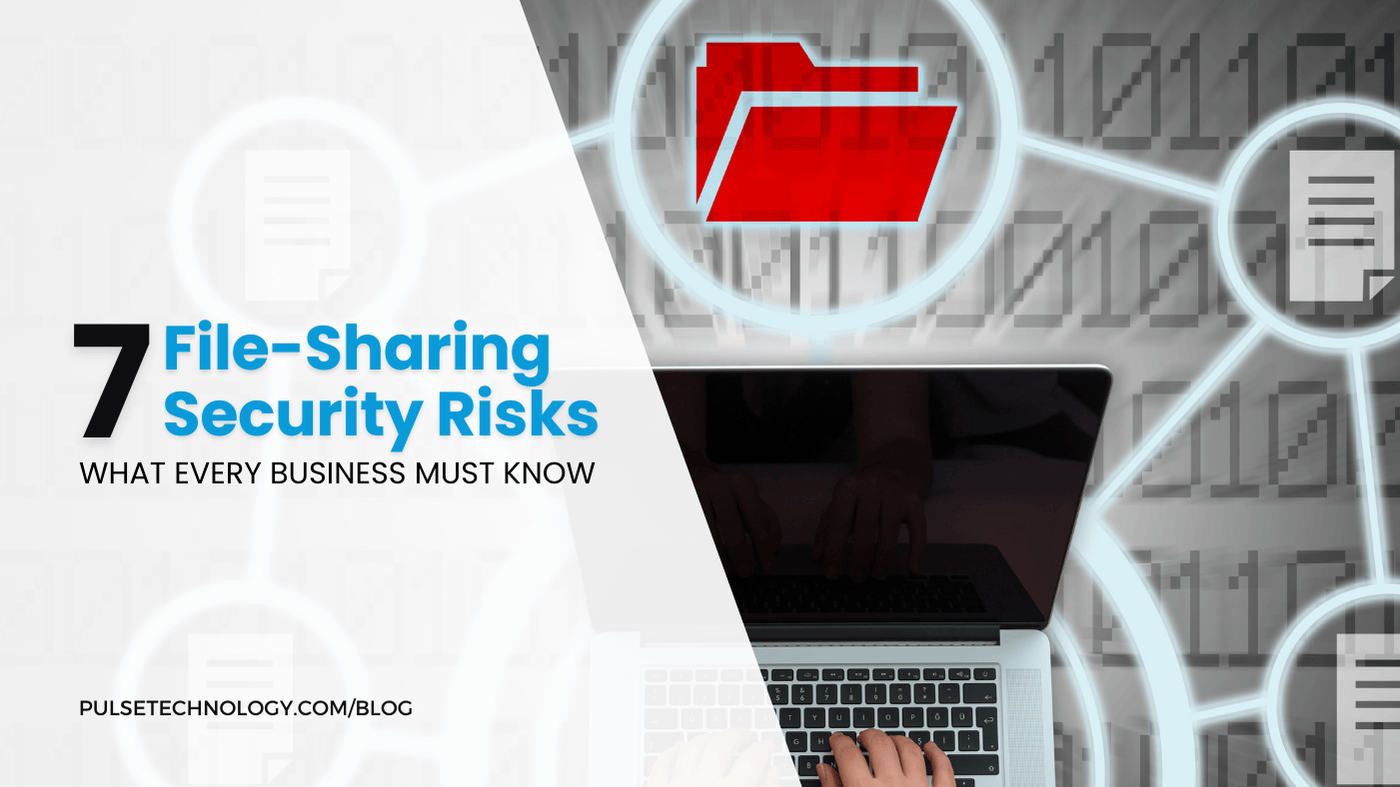How to Secure Remote Working in a Hybrid Setup
Remote work has become the norm, but with that freedom comes the challenge of defending against cybersecurity threats while ensuring a secure workspace. If your team operates in a hybrid office—where employees split time between home and the office—safeguarding sensitive information from these threats is more critical than ever. There are several steps you can take to establish a rock-solid remote work security plan, from secure devices to safe data access.
In this blog, you’ll discover key security risks posed by remote work, best practices to protect your company's data, and essential security tips for working remotely.
What Is Remote Work Security?
Remote work security involves safeguarding corporate applications and data accessed outside the corporate network. As hybrid and remote work increases, companies must implement effective IT solutions that balance security with user-friendly access and performance, protecting against threats like untrusted remote access. According to a report by Gartner, 82% of company leaders plan to allow employees to work remotely at least part of the time, highlighting the importance of robust security protocols.
Why Is Securing Remote Workers Important?
As more businesses adopt flexible work models, the security risks multiply. A report found that 45% of organizations experienced cyber threats due to remote work during the pandemic. Employees working from home may use unsecured networks, weak passwords, or outdated software, leaving company data vulnerable. For instance, using public Wi-Fi without a VPN can expose sensitive information to cybercriminals.
Ensuring remote workers are secure not only protects your business from these cyber threats but also maintains the confidentiality of client data, intellectual property, and financial information. In fact, the cost of a data breach can average $4.45 million, according to IBM's Cost of a Data Breach report. This makes it crucial for organizations to invest in secure remote working practices.
What Are the Biggest Security Risks for Remote Workers?
The hybrid work model increases exposure to various security risks. Unsecured Wi-Fi networks, for instance, can allow hackers to intercept data transmitted over the internet. Phishing attacks, which accounted for 36% of all data breaches according to 2022 statistics, often target remote workers through deceptive emails or messages that trick users into revealing personal information or clicking on malicious links.
Additionally, weak personal devices that lack robust security software can serve as gateways for malware and ransomware attacks. It's crucial to recognize these risks early on to develop better strategies for combating them, such as enforcing strict security policies and providing employees with the necessary tools and training to navigate potential threats effectively.
Technical Vulnerabilities in Remote Work Environments
Most vulnerabilities stem from two main areas: weak endpoint security and insecure internet connections. Employees who use their devices either at home or in public areas without proper security measures become easy targets for attacks. This lack of vigilance can lead to severe breaches, as unprotected devices may become infected with malware that compromises corporate networks.
Organizations must prioritize endpoint security by deploying comprehensive antivirus solutions, establishing clear policies for device usage, and regularly monitoring endpoints for unusual activity.
3 Key Elements of Remote Work Security
To establish a secure workspace for remote work, it’s essential to concentrate on three fundamental areas:
1. Network Security
Utilizing encrypted connections, such as virtual private networks (VPNs), ensures that data remains secure during transmission, even when employees access it remotely. VPNs offer several benefits, such as creating a secure tunnel that shields data from unauthorized access. This makes it much harder for cybercriminals to intercept sensitive information.
Additionally, ensuring that employees connect only to secure, private Wi-Fi networks further protects against potential security breaches. This practice prevents data exposure and maintains network integrity, particularly when employees avoid using unsecured public hotspots, which are more vulnerable to attacks.
2. Device Security
Implement antivirus software, firewalls, and encryption on company devices to safeguard against potential threats. These security measures provide a strong first line of defense by detecting and blocking malicious software before it can cause harm.
Regular software updates and security patches further enhance device security by addressing newly discovered vulnerabilities, ensuring that systems are always protected against the latest threats. This proactive approach reduces the likelihood of successful attacks and keeps company data and systems safe.
3. Data Access Security
Restrict access to sensitive information based on employee roles and enforce multi-factor authentication (MFA) for an added layer of protection. This reduces the risk of data breaches by limiting exposure. An MFA adds a layer of protection by requiring employees to verify their identity through multiple methods, such as a password and a one-time code sent to a mobile device.
Even if passwords are compromised, MFA helps prevent unauthorized access. Implementing role-based access controls (RBAC) minimizes the risk of data leaks, as employees only have access to information relevant to their job functions, ensuring tighter data security across the organization.
11 Security Tips for Working Remotely
With the foundational elements of remote work security established, the next step is to implement practical security measures that will enhance your hybrid office. Below are 11 practical tips to enhance security and reduce vulnerabilities:
- Establish Clear Policies and Guidelines
Set clear expectations for employees regarding device usage, data access, and communication. For example, create a comprehensive employee handbook outlining acceptable use policies, remote work protocols, and guidelines for reporting security incidents. Include specific rules on using personal devices for work. - Create a Culture of Vigilance
Foster a culture of security awareness within the company. This can include hosting monthly security meetings where employees discuss recent threats and best practices. Share newsletters or bulletins that highlight common scams and reminders about safe online behaviors. Make sure every employee understands how their actions impact overall security and the importance of adhering to security protocols. - Conduct Periodic Security Audits to Spot Weaknesses
Regularly audit your systems and processes to identify vulnerabilities. Address outdated policies, ineffective tools, or lapses in employee training before they can be exploited. Schedule these audits bi-annually and create action plans to address any gaps identified during the assessments. - Implement Security-Focused Employee Training Programs
Aside from constant reminders, it’s equally important to educate employees on the latest cyber threats like phishing and social engineering. Conduct quarterly training sessions that teach employees how to recognize and respond to cyber threats. - Enforce Strong Password Practices & MFA
Require complex, regularly updated passwords and promote the use of password managers to store and generate secure passwords. Implement MFA across all systems, such as using Google Authenticator or Microsoft Authenticator, to add an extra layer of security beyond just passwords. - Secure Communication and Collaboration Tools
Use encrypted and secure communication platforms. For instance, ensure that all Slack communications are set to private, utilize Zoom’s encryption features for meetings, and configure Microsoft Teams with strong access controls to prevent unauthorized access to sensitive discussions. - Secure Cloud-Based Applications & Data Encryption
Ensure cloud applications, such as Google Workspace or Microsoft Azure, offer encryption and require MFA for access. Use encryption services to conceal sensitive data on devices, ensuring that data remains protected both at rest and in transit. - Implement Endpoint Detection and Response (EDR)
Deploy EDR solutions to monitor endpoint activity, detect anomalies, and respond quickly to potential security threats. These tools can provide real-time visibility into endpoint behaviors and flag any suspicious activities for immediate investigation. - Limit Access Based on Roles (Role-Based Access Control - RBAC)
Use RBAC to restrict data and system access based on employee roles. For example, an HR manager may have access to sensitive employee records while a marketing team member does not. Tools like Microsoft Entra ID can help manage role-based permissions efficiently. - Develop an Effective Incident Response Plan
Prepare for potential security incidents with a robust response plan. Create a detailed incident response plan outlining specific roles and responsibilities, steps to take during a breach, and communication strategies. Conduct mock drills to ensure that the team is familiar with the process and ready to act quickly in case of a breach. - Invest in Cybersecurity Tools that Fit the Hybrid Model
Select tools such as endpoint protection, Secure Access Service Edge (SASE) solutions, and real-time threat detection systems that are tailored to the needs of a hybrid work environment. These tools offer a comprehensive defense while supporting the flexibility of remote work.
Keep Your Hybrid Office Protected with Strong Security
Creating a secure remote workspace requires ongoing vigilance and the right tools to protect against evolving cyber threats. Implement essential security measures and train your team on best practices to ensure your hybrid office remains resilient.
Don’t leave your business exposed to risks. Secure your hybrid office today with Pulse Technology’s comprehensive remote work security solutions. As a complete office technology partner, we provide managed IT services, office technologies, and products designed to help your business run smoother and safer. Contact us today to discuss how we can help secure your remote workspace!



